
2024 Awardees
Professional Engineers Gold Medal
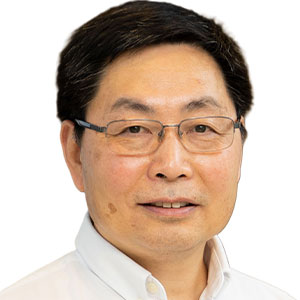
Professor Zhu is a Canadian engineer, scholar, and educator who has made outstanding contributions to research, teaching, and community service.
Professor Zhu is one of the world-renowned experts and a visionary in the area of space engineering, ranging from additive manufacturing in space to astrodynamics, the dynamics and control of spacecraft, space debris removal, space robotics, space elevators, and CubeSat technologies.
Most notably, he has led as the Principal Investigator the design, build, and launch of two CubeSat missions that have provided young Canadians with end-to-end real mission experiences and enhanced Canada’s international leadership in space.
Dr. Zhu is known, in Canada and internationally, for his visionary projects, including the manufacture of spacecraft through the use of 3D printing in space, which has dramatically changed the means of access to space since the beginning of the modern space era. This project attracted over $8M in funding from the Canada Foundation for Innovation and New Frontiers in Research Fund, which described his research as “innovative, and pushes new frontiers in science” and will “bolster Canada’s effort to support human spaceflight to the Moon and Mars.”
Because of his successful track record in pushing new research frontiers, Professor Zhu was appointed the inaugural Academic Director of Research Commons to lead research intensification efforts at York University.
His work has been recognized with the 2024 Solid Mechanics Medal and 2021 Robert W. Angus Medal from the Canadian Society for Mechanical Engineering, the 2022 York President’s Research Excellence Award, and the 2019 OSPE Engineering Medal for R&D.
Dr. Zhu holds many leadership roles in scientific societies, including Vice-President of International Society of Mechanical Systems Dynamics (2023-2026), Honorary Treasurer and Board Member of Canadian Society for Mechanical Engineering (2022-2025), Chair of College member selection subcommittee of Physics & Earth Sciences at College of New Scholars, Artists and Scientists of Royal Society of Canada (2021-2023), Chair of Space Tethers Technical Committee of American Institute of Aeronautics and Astronautics (2019-2022), and Chair of Resource Allocation Committee of Shared Hierarchical Academic Research Computing Network in Ontario (2007-2012). In 2011, he served in the Leaders Working Group to provide advice on Ontario Aerospace Research and Education for the Ontario Ministry of Economic Development, Job Creation and Trade.
Nationally and internationally, Professor Zhu is recognized for his expertise, serving on committees such as Co-Chair of Discovery Grant Evaluation for Mechanical Engineering at Natural Sciences and Engineering Research Council (2021-2023), judge for the NASA postdoctoral program since 2016, and “Tomorrow’s Engineering Leaders: The 20 Twenties” in 2017; review panel of Ontario Centres of Innovation (2008-); National Centre of Science and Technology Evaluation of Republic of Kazakhstan (2019-24); Shastri Institutional Collaborative Research Grant of India (2017-18); European Research Council (2016); and Georgian Shota Rustaveli National Science Foundation (2015).
He contributes significantly to engineering by combining fundamental engineering principles with applications in sustainability. His impressive work will truly increase access to outer space for human society.
His research has also enriched the scientific and engineering literature with 372 papers in peer-reviewed journals and conference proceedings, one book, and 5 chapters in other publications.
In addition to his professional responsibilities, Professor Zhu has actively volunteered with PEO at headquarters and the chapter level. He has participated in many professional societies with leadership roles, and he has served as Editor-in-Chief, co-editor, and regional/associated editor for many journals and chaired many international conferences.
Professor Zhu is a Fellow of the Canadian Academy of Engineering, the Engineering Institute of Canada, the Canadian Society for Mechanical Engineering, the American Society of Mechanical Engineers, and an Associate Fellow of the American Institute
of Aeronautics and Astronautics.
He is also an academician (full member) of the International Academy of Astronautics and a senior member of the Institute of Electrical and Electronics Engineers.
Citizenship Award

Annette Bergeron, P.Eng. has made exceptional contributions to her local and national engineering communities.
An outstanding person and engineer, Bergeron has displayed strong leadership and passion for the profession by taking on the role of President or Chair in three top engineering associations: the Ontario Society of Professional Engineers (OSPE), Professional Engineers Ontario, and Engineers Canada.
At OSPE, she spearheaded initiatives such as “The Canada 150 STEM Challenge: Overcoming Systemic Barriers for Women Choosing STEM Careers”. Additionally, she led the creation of DiversifySTEM, an app addressing diversity and inclusion issues in STEM workplaces.
Bergeron’s stand-out contribution at PEO her direction on the Continuing Professional Development (CPD) program. Her task force proposed an innovative risk-based system which tailored CPD as appropriate to each individual practitioner Annette’s efforts culminated in the development of the Practice Evaluation and Knowledge (PEAK) program, which forms the basis of PEO’s mandatory CPD program.
Beyond her professional roles, Annette has served her community extensively. She has shared her expertise in various industries, including healthcare, serving on the Kingston General Hospital board. Afterwards, she moved up to the South East Local Health Integration Network Board, appointed by the Minister of Health.
She was also appointed as the 6th Fort Henry Honorary Guard Commander. Her commitment to volunteerism has earned her prestigious awards, including the Governor General’s Sovereign’s Medal and recognition as one of the Top 25 Women of Influence in Canada.
Overall, Annette Bergeron’s outstanding leadership, dedication to diversity and inclusion, and significant contributions to engineering and community service make her a deserving recipient of the Ontario Professional Engineers Award for Citizenship.
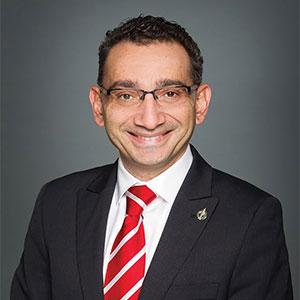
Omar Alghabra has been one of the most influential engineers in Canada, someone who displays his pride in his profession every day. Throughout his career, Omar Alghabra has always been a proud engineer who believes passionately in the role of engineers in the betterment of society. He has served as a Member of Parliament for 11 years, as a Parliamentary Secretary for 6 years, and as a Minister for 2.5 years. He recently announced that he is leaving politics and has stepped down from his role as Minister of Transport.
He is a leader who has made a significant impact on Canada’s transportation system, and its economic competitiveness. Omar led the Federal Ministry of Transport at the height of COVID-19, during an extraordinary period that saw many disruptions to the transport network and exposed several fault lines that existed in the system. Omar performed his duties with steadiness at a time of anxiety and uncertainty. Not only did he manage a never-before-seen confusion, but he was determined to fix many of the underlying problems. This included ensuring government funds were allocated to sectors in dire need and to save jobs.
His greatest legacy in Transportation may be that he Developed and implemented decarbonization policies for all modes of transportation that work towards a net zero system by 2050.
Omar is a role model to engineers and deserves to be recognized for his unique role in advancing the profession and improving our society.
As a Member of Parliament, Omar dedicated much of his career to serving his community. His priority has always been mentoring and supporting future leaders. Being an immigrant, racialized, and Muslim Canadian who has had to overcome many obstacles to serve in one of the highest public offices earned him the recognition of the 2022 Top 25 Canadian Immigrant Award.
Omar has also established a Youth Council that would invite young people to learn about the inner workings of government and politics and provide them with opportunities to help shape public policy. His youth council was established in 2016, consisting of 12-20 youth, and ran for 8 years. Through this Youth Council, Omar created the opportunity for almost 100 young Canadians to meet with Ministers, and senior government officials and to advocate for issues that matter to them, ensuring that young voices are represented in the Federal government’s decision-making process.
As a Member of Parliament, he is a staunch advocate for community organizations and has helped dozens of not-for-profit organizations receive funding from government programs so they can improve their services to their stakeholders, including local food banks, settlement organizations, and youth groups.
As an example of his commitment to the community, and his ability to connect deeply with Canadians, the Prime Minister entrusted Omar to support Canadian victims’ families affected by Ukrainian International Airline flight PS752. He worked on providing legal assistance and announced the Federal government’s Funds matching of the Canada Strong campaign of $1.5 million.
Throughout Omar’s tenure as an elected representative, he faced significant Islamophobia and even received death threats as Minister of Transport. However, his ability to show compassion and understanding, even to those who have shown him nothing but disrespect enabled him to succeed where many hoped and expected he would fail.
Omar is well-liked and respected by his colleagues, his support team, and Members of the Opposition. According to Toronto Star Journalist Bob Hepburn who had written an Op-ed piece about Omar “Indeed, Omar Alghabra should be hailed as an example of the best that Canada has to offer the world – smart, respectful, welcoming of all people, dedicated and patriotic’. He was all of these things and so much more while consistently promoting the engineering profession and fellow engineers to participate in politics.
As he retires from politics, he leaves a legacy not just for young racialized and Muslim Canadians to aspire to, and young engineers, but for all in the profession to pursue the noble path even when it might be the more challenging one.
Engineering Medal – Engineering Excellence in Industry
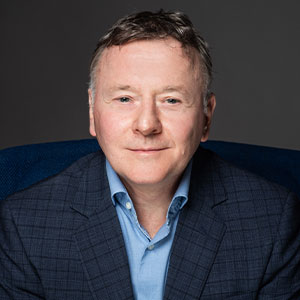
Mike’s journey from a University of Toronto Electrical Engineering graduate to the Co-Founder, President, and CEO of PEER Group, has been one defined by innovation, integrity, and a commitment to engineering principles.
Founded in 1992 by Mike and fellow engineer, Bob Harris, PEER Group has earned its place as a global market leader by developing innovative equipment control and factory connectivity software for the semiconductor industry.
Much of PEER Group’s success is a direct result of Mike’s application of engineering principles to all aspects of the company’s operational business model. Following a strict engineering-based process of problem identification, specification, prototyping, testing, and implementation, PEER Group development teams have written millions of lines of code and currently manage a portfolio of products consisting of more than one billion lines of code.
An Ontario engineering leader, PEER Group plays a vital role in meeting the global demand for semiconductors. The company’s software automates over 130 equipment platforms and powers more than 100,000 manufacturing tools which are integrated into virtually every semiconductor factory in the world. In fact, every chip produced in 2023 was manufactured by equipment using PEER Group software.
PEER Group’s commitment to performance, innovation, and customer service has led to several industry awards and accolades. These include being recognized by Intel’s prestigious EPIC Supplier Program Awards for nine consecutive years as a top supplier out of the more than 17,000 companies that make up Intel’s global supply chain. This recognition speaks volumes about the impact of Mike’s vision and leadership.
Additional awards and recognitions achieved by PEER Group include being an 11-time recipient of Great Place to Work – Canada’s Best Workplaces Award and being ranked on the Deloitte Technology Fast 50 and North American Technology Fast 500 lists of high revenue growth companies.
After participating in the BDC Growth Driver program in 2017, during which PEER Group increased revenue by more than 44 per cent, Mike was lauded by program managers for his engineering-focused approach to business – so much so that he was asked to help improve the program by participating in panels and acting as a mentor for future cohorts.
In 2023, Mike was the first – and only – Canadian to be selected to join the SEMI North America Advisory Board. In this role, Mike contributes his time and insights to help raise the industry’s profile in Canada and the United States. Most recently, he was part of a delegation to Capitol Hill in Washington to lobby for the CHIPS Act and help revitalize domestic semiconductor production in the US.
Mike’s commitment to giving back inspires PEER Group employees to do the same. True to the engineering-focused approach upon which Mike leads the company, the selected charities have low administration fees and make a big impact. Funds are raised through personal donations as well as corporate fundraising initiatives which match employee contributions. These efforts have resulted in more than $435,000 being donated to charitable organizations focused on improving the health, well-being, and opportunities for disadvantaged families, youth, and pets in the Region of Waterloo.
Since founding PEER Group over thirty years ago, Mike has forged a remarkable legacy of technical achievement, employee satisfaction, and community support. In everything Mike does, he demonstrates a commitment to PEER Group’s four guiding principles: performance, innovation, compassion, and integrity.
Engineering Medal – Management
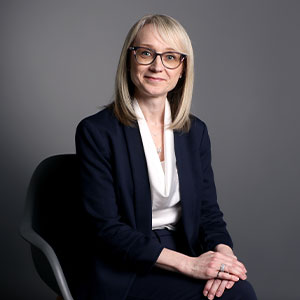
Inga Hipsz, with a background in Mechanical Engineering from the University of Toronto, is dedicated to process improvement and team empowerment.
Beginning her career at Kodak Canada, Inga swiftly rose through the ranks. She championed Lean manufacturing principles to improve efficiency and reduce product defects. Not only did she achieve those goals, but Inga also reduced production downtime, which won her the Kodak Operating System Leadership Award.
She then transitioned to CSA Group, where she continued to enhance organizational performance. She spearheaded Lean process improvement initiatives within the nuclear standards development process, resulting in a doubling of industry funding. For this innovation, she earned her the President’s Innovation Award and set up a permanent Lean team under her leadership.
Inga’s journey with CSA Group continued when she assumed the role of Regional VP, Americas in CSA Group’s Testing, Inspection and Certification business, where she orchestrated a remarkable turnaround. Through her emphasis on data-driven decision-making, coaching, and fostering a culture of continuous improvement, she achieved significant milestones to improve the operations under her leadership.
Most recently, Inga was appointed Vice President, Standards, Strategic Development where she is responsible for furthering the mission of CSA Group’s Standards organization and broadening its impact by expanding standardization into new areas of the economy.
Beyond her professional accomplishments, Inga’s commitment to advancing her profession and community is exemplary. She actively shapes North American standards, advocates for diversity, equity, and inclusion, and mentors aspiring engineers, particularly women. Her engagement with the community spans from alumni ambassadorship to involvement in childcare and education initiatives, as well as girls sports.
Inga Hipsz’s journey embodies exceptional leadership, innovation, and service.
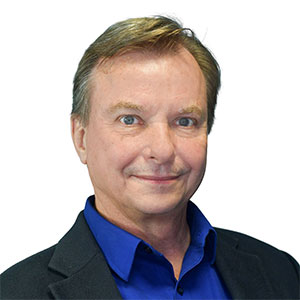
The founder and CEO behind The Poirier Group, David Poirier, P.Eng. has brought the management consulting firm to new heights, helping clients reshape corporate landscapes and set new standards of operational efficiency. The Poirier Group is Great Place to Work Certified and has been among Waterstone Canada’s Most Admired Corporate Cultures every year since 2020. It’s also been listed by the Globe and Mail as one of Canada’s Top Growing Companies and is a Vault Top Ranked Consulting Firm.
Before the foundation of his firm, Poirier’s illustrious career was marked by transformative leadership roles in corporate behemoths like Loblaw Companies Ltd. and Hudson’s Bay Company, where his strategic vision propelled substantial growth and streamlined processes.
David was the first industrial engineer hired by Loblaw Companies Ltd., joining the company in 1981 and holding progressively more senior roles, eventually serving as Senior VP of Logistics, Planning & Systems from 1995-1998.
At Loblaw, Poirier’s innovative strategies double the product quantities going through its distribution centres in 10 years while adding no square footage and a minimum amount of labour. In six years, Loblaws’ revenue jumped to $11 billion from $8.6 billion, showcasing his knack for strategic planning and business systems re-engineering.
Similarly, during his tenure at Hudson’s Bay Company, Poirier’s transformative initiatives positioned the company’s IT group as a strategic asset while optimizing infrastructure processes for enhanced operational effectiveness. His leadership in crafting customer loyalty programs and spearheading performance improvement initiatives underscore his multifaceted contributions to organizational success.
Beyond his corporate endeavours, Poirier’s leadership roles in esteemed organizations like the Council on Industrial & Systems Engineering (CISE) and the Institute of Industrial and Systems Engineers (IISE) underscore his commitment to championing the value of industrial engineers’ contributions to industry.
Poirier is also an Executive for the Ritual of the Calling of an Engineer and a volunteer for the distribution of iron rings in Toronto. As a member and past Chair of the Executive Committee for Camp One, he has focused on how best to share the ethics and obligations involved in becoming an engineer with the next generation.
Engineering Medal – Entrepreneurship
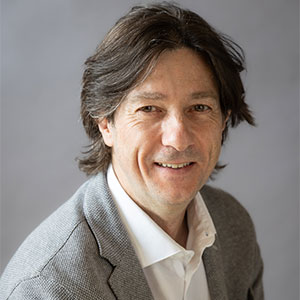
Dr. Giovanni Grasselli is a Professor in the University of Toronto’s Department of Civil and Mineral Engineering and NSERC – Energy Simulation Industrial Research Chair in Fundamental Rock Physics and Rock Mechanics.
The impacts of Professor Grasselli’s work are profound and multifaceted, spanning technical innovation and entrepreneurship, professional service, and community engagement. His groundbreaking research on joint roughness and shear strength led to new standardized methods and several online tools.
The commercialization of FDEM (Finite Discrete Element Method) method technology via Geomechanica Inc., offering tools and methodologies that enhance the safety, efficiency, and predictability of engineering projects, is a significant entrepreneurship achievement given its continual growth and the advancement and contributions it created in the field of rock mechanics. His pioneering research has significantly advanced our understanding and capabilities in simulating complex rock mechanics problems. This work, combined with his entrepreneurship skills, culminated in the development of Irazu, the first state-of-the-art FDEM commercial software.
The establishment of Geomechanica Inc. has effectively bridged the gap between academic research and industrial application, making advanced research outcomes more accessible and beneficial to the industry. This was further strengthened when he hosted the first FDEM International symposium that brought together leading academicians, practitioners, and developers within the FDEM rock mechanics community to exchange ideas and research.
Professor Grasselli’s leadership in bridging academic research with practical application has not only propelled the engineering profession forward, it has also fostered a culture of innovation and excellence. His contributions have earned him the Canadian Geotechnical Society’s John A. Franklin Award.
Professor Grasselli’s dedication to advancing the profession is reflected in his work as associate editor and editorial board member of professional journals (Rock Mechanics and Rock Engineering, Tunnelling and Underground Space Technology, Journal of Rock Mechanics and Geotechnical Engineering), and his efforts to support and promote equity, diversity, and inclusion within the engineering community.
Professor Grasselli has mentored numerous students and young professionals, encouraging participation from underrepresented and minority groups in engineering and acting as a role model for aspiring future generations of engineers. His contributions include developing educational resources and workshops that enhance the knowledge and skills of practicing engineers, further exemplifying his service to the profession.
Through his guidance, his research group volunteers to organize workshops to engage local schools and spark interest in science and engineering among high school students. His participation in community-based projects showcases his dedication to applying engineering solutions for social and environmental improvement further through his leadership role within the NSERC REDEVELOP training program. The program was established to train highly qualified personnel, across various universities and educational streams, to develop innovative energy transition solutions and techniques, while also establishing a dialogue with First Nations. Professor Grasselli’s involvement in these initiatives aims to improve community resilience and sustainability, spotlighting his belief in the responsibility of engineers to contribute positively towards a better society.
His work, both within and outside the realm of his professional achievements, reflects a deep commitment to leveraging engineering expertise for the greater good.
Engineering Medal – Young Engineer
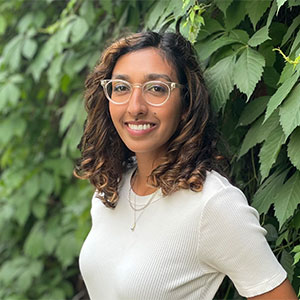
Serena Mandla has made exceptional contributions to the field of biomedical engineering and shown her commitment to fostering diversity and inclusion within the industry. After earning her MASc in Biomedical Engineering from the University of Toronto in 2019, Serena commercialized her research at Quthero, a startup focused on commercializing immune instructive biomaterials for skin and wound healing applications. As Chief Scientific Officer, she led the development and launch of Quthero’s first commercial product, a skin rescue cream, which was distributed to frontline workers across Canada and the US during the COVID-19 pandemic.
Serena’s leadership extended beyond product development; she also spearheaded a multi-site clinical trial to evaluate the safety and efficacy of their products, with the results presented at the prestigious Conference of the American Society for Laser Medicine and Surgery. Her efforts were pivotal in securing funding for Quthero’s growth, including closing rounds of seed financing and securing their Series A lead investor.
Building on her success at Quthero, Serena co-founded Noa Therapeutics with the goal of leveraging her experience in inflammatory and regenerative medicine to transform the treatment of complex immune diseases. There she serves as Chief Scientific Officer. Noa Therapeutics is pioneering the development of tri-modal therapeutics for complex immune diseases, such as atopic dermatitis and ulcerative colitis.
In the year and a half since incorporation, Serena’s leadership at Noa Therapeutics has led to validation of a lead drug compound, filing of key provisional patents, a feature on Serena in the “Founded in Canada BIPOC Showcase” in Disruption Magazine, selection of the company as a Life Science Ontario Success Story in 2022 and 2023, and finalists in the Sanofi Golden Ticket Challenge and Johnson and Johnson Atopic Advancements QuickPitch Challenge. Serena also pitched at Innovation Factory’s Lion’s Lair in 2023, bringing Noa Therapeutics to a second-place finish.
As a young woman of colour, Serena has personal experience with prejudice and closed doors. A core mission at Noa Therapeutics is to ensure that no one else experiences the same barriers and hurdles that she has experienced simply because of their gender or the colour of their skin. She and her co-founder, Carla Spina, at Noa Therapeutics are committed to inviting underrepresented populations as mentors, advisors, investors, board members, and employees as they build Noa Therapeutics and actively engage with the community. The result is a company where senior management is 100% woman and 50% people of colour, board composition is 67% woman, with fundraising due diligence led by 58% women, and direct investment from women comprising 27%.
Serena’s impact extends beyond her professional achievements; she is also actively involved in mentoring youth through the University of Toronto Engineering Alumni Mentorship Program where she has served as a mentor since 2019, and the Canadian Biomaterials Society, where she was a mentor from 2020-2022. She has delivered talks on biomedical engineering and entrepreneurship at Queens University, Western University, McMaster University, University of British Colombia, and the University of Toronto.
Serena has also served as a Change Project Coach at UofT’s Institute for Leadership in Engineering Education (ILead).
Serena Mandla’s groundbreaking work in biomedical engineering, coupled with her dedication to diversity and mentorship, make her a deserving recipient of the Young Engineer medal.
Engineering Medal – Research and Development
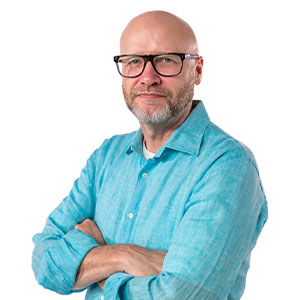
Gregory Kopp has made groundbreaking contributions to wind engineering, particularly in mitigating damage and losses caused by extreme storms. His research career has been distinguished by a relentless focus on enhancing public safety and reducing the impact of severe weather on buildings and infrastructure.
Kopp’s leadership as the co-founder and leader of the Northern Tornadoes Project (NTP) has revolutionized the understanding of tornado occurrence in Canada. The NTP, under his guidance, has become the authoritative source for tornado occurrence and intensity assessment in the country, providing invaluable data for enhancing building codes and standards.
His work has not only increased public safety but has also led to a reduction in losses and damage incurred during storms. One of his notable achievements includes spearheading the development of Canada’s first consensus-based design standard for wood-frame houses to withstand tornadoes, a standard that has global implications for enhancing building resilience.
Moreover, Kopp’s contributions to building aerodynamics have led to significant revisions in the US design standard ASCE 7, impacting the design of countless buildings annually. His pioneering work in developing the multi-chamber pressure loading technique has enabled full-scale, repeatable tests on residential structures and building components, thereby improving their resilience to wind loads.
Beyond his research contributions, Kopp’s service to the profession and community is exemplary. He has held numerous leadership roles in professional organizations and actively collaborated with charities to assist in disaster recovery efforts. Through his partnership with the Institute for Catastrophic Loss Reduction (ICLR), Kopp has facilitated the translation of research into practical solutions, ultimately contributing to the creation of tornado-resilient communities.
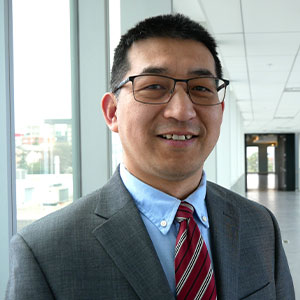
Dr. Boxin Zhao, P.Eng., has made outstanding contributions to the field of chemical engineering. Dr. Zhao’s journey began in 2008 when he founded the Surface Science and Bionanomaterials Laboratory at the University of Waterloo, which has since evolved into a globally renowned research facility. His work spans an array of subjects within chemical engineering, including polymers, biomimetic materials, and soft robotic devices.
One of Dr. Zhao’s key achievements lies in his groundbreaking research on soft materials, which are increasingly crucial in today’s chemical industry for their superior performance and environmental benefits.
In terms of scientific discoveries, Dr. Zhao’s work on polymer adhesion and adhesives stands out. His investigations into the adhesion mechanisms of gecko lizards have led to the development of micron-structured adhesives with on/off switching properties, crucial for soft robotic applications. Additionally, his team’s breakthrough discovery of a stiffness-changing hybrid polymer gel, reported in Nature Materials, offers a novel solution to engineering challenges like shape adaptability and load-bearing capability.
In terms of developing useful novel applications, his team developed a novel application of the adhesive chemistry of marine mussels and invented the Waterloo “superglue” (granted US patent #14/360,986) that can compete with water to bond on substrates. He worked with manufacturing companies (e.g. Celestica, Microbonds) (2010-2019) and developed conductive nanocomposites as a greener solution to replace metallic solders for electronic packaging, which won the Business-lead Refined Manufacturing Acceleration Process Network Commercialization Finalist Award.
More impressively, Dr. Zhao founded a startup company, EverBond, in 2018 to commercialize a novel coating technology using polymer gels created in his lab, with awarded projects from Innovative Solutions Canada. EverBond developed an antimicrobial coating technology licensed to industry in 2020-2021. Currently, he leads EverBond on a paid collaboration project with a private manufacturing company (2023-2024) and is scaling up the development.
Other important discoveries include a water-borne polyurethane composite material for smart windows applications, a programmable 3D printed hydrogel wound dressing that could improve treatment for burn patients, and cancer patients, and gelatin-based “Janus” biogel for human-machine Interfaces such as in epidermal adhesive electrodes.
His 134 peer-reviewed papers in prestigious journals like Chemical Engineering Journal and Nature Materials attest to the significant advancements he has made in this field. Furthermore, he has successfully applied his research findings into practices through his collaborating industrial partners, e.g. Celestica, Microbonds, EcoSynthetix, GE Aviation, SiO2 International, and improved Canadian industries’ competitiveness in global economies.
Dr. Zhao’s service to the profession and community is equally commendable. He has actively participated in professional associations and societies, organized symposia, and served on various committees, contributing to the exchange of ideas and dissemination of knowledge. Furthermore, his voluntary services to scientific communities, including serving on selection committees and editorial boards, highlight his commitment to advancing research and innovation.
Dr. Boxin Zhao’s pioneering research, extensive publications, collaborative efforts with industry, and service to the profession and community underscore his deservingness of the engineering medal in research and development.
Distinguished Lifetime Achievement Award
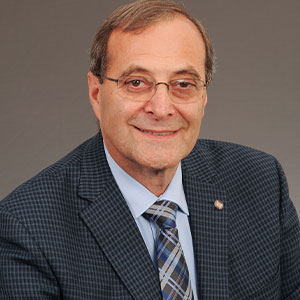
Paul Acchione has a long history as a dedicated supporter of OSPE. He was first elected to the OSPE Board in 2012 and served as the Vice Chair in 2012 and then President and Chair for the 2013-2014 term.
During his tenure on the OSPE Board, Paul chaired OSPE’s Executive, Human Resources, and Membership Advisory Committees. He was also a member of the Board Development and Strategic Planning Committee, the CEO Selection Committee, the OSPE/PEO Joint Relations Committee, the Chapter Liaison Committee, the Underemployment Working Group, and the Continuing Education Working Group. He was a previous Chair of the Energy Task Force and continues to participate as a driving force contributor to this Task Force. Paul spent his last year on the OSPE Board, as Past Chair, as well as the Acting CEO, all while traveling the province providing PEO Chapters with informative policy seminars.
Over the last six years, Paul has continued to make tremendous contributions to the engineering community, advancing the reputation of OSPE with the government and the public.
In 2017 alone, Paul was responsible for two major research reports that elicited 59 earned media responses, including coverage by major outlets such as the Business News Network Television, CP24 Television, CBC News, CTV News, Newstalk1010 Radio, National and Financial Post, and the Toronto Sun. To put this number in perspective, it is three times greater than OSPE’s total earned media coverage in 2016-reaching an audience in the tens of millions at a multi-million-dollar financial value to OSPE.
In 2016, Paul was the primary author of OSPE’s submission to Ontario’s 2017 Long-Term Energy Plan, a strategic document that dictates sectoral planning and forecasting with a 30+ year time horizon, renewed on a recurring three-year basis. OSPE’s submission attracted public attention because it highlighted more than $5 billion in annual public savings achieved through improved system planning, design, and pricing. This document opened doors for OSPE, including meetings with the Minister of Energy and senior Ministry officials, the Leader of the Official Opposition and his senior staff, and advisors to the Leader of the Third Party – as well as countless other non-governmental stakeholders and partners.
Paul has a B.A.Sc. and M.Eng. degree in Mechanical Engineering from the University of Toronto. He is a licensed professional engineer in Ontario and is a member of ASME, IEEE, CNS and is a Fellow of the Canadian Academy of Engineering. Paul has over 40 years of engineering and management experience in the power generation industry. He worked for 31 years with Ontario Power Generation (OPG) and its predecessor companies. He is now a Management Consultant at Market Intelligence and Data Analysis Corporation.
During his career, Paul held several positions from design engineer progressing up to project manager and department manager. He received 2 new technology awards and a product champion award. Paul’s experience included fossil and nuclear plant design and simulation studies of the performance of generation plants and their integration with the electrical grid during normal operation and disturbances. Paul has authored a dozen technical papers published related to his design, simulation, and project management experience while at OPG and its predecessor companies. His consulting career includes projects for Bruce Power, OPG, the Independent Electricity System Operator (IESO), and Atomic Energy of Canada (now CANDU Energy Inc.).
Paul has also been active in his community during his working career. Paul was a volunteer with COSTI, an immigrant aid organization, was president of his local parish council, was president of one of Peel’s condominium corporations, and was president of the Carlyle Residences Owners Association.
Paul’s unwavering commitment to the betterment of his profession and the power of engineers, and engineering, to build a better world is truly inspiring. Paul has fought and made a difference in solving challenges for his community, the province, and the country – proving that engineers can and must make a difference.